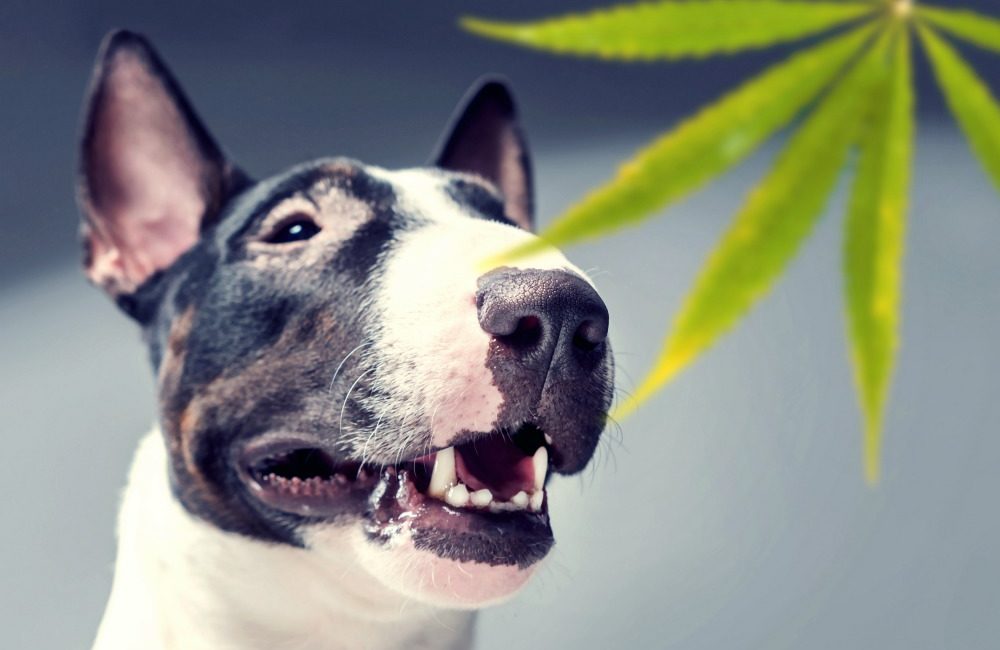With marijuana now being legalized all within Canada, it is important to know its effects on your beloved pets. We all know it is a popular recreational (and human medicinal) plant smoked and consumed by millions of people throughout the world. Unfortunately, humans can sometimes absentmindedly leave these products in locations accessible to their curious pets, leading to ingestion.
Additional Common Names: Indian Hemp, Hashish
Scientific Name: Cannabis sativa
Family: Cannabaceae
Toxicity: Toxic to Dogs, Toxic to Cats, Toxic to HorsesToxic Principles: Delta-9-THC (tetrahydrocannabinol)
Marijuana consists of the dried leaves and tops of the Cannabis sativa plant, while “hemp” is a term generally reserved for the stems. Cannabinoids are the active marijuana-derived substances that have pharmaceutical activity. The psychoactive chemical that makes marijuana a recreational drug is delta 9-tetrahydrocannabinol, more commonly called THC. It also happens to be the chemical that is harmful towards our pets, should it be ingested, or even heavily inhaled.
Another cannabinoid chemical is cannabidiol, commonly referred to as “CBD”, this is not considered recreational as it is prescribed in a medical nature within human medicine. CBD has been used in the human medical field to mitigate anxiety, improve appetite, relieve nausea, control seizures of specific types, as well as assist in sleep disorders.
Medical Marijuana Products For Pet Use
A large variety of CBD products are available for human use both online and through dispensaries. With the legalization of marijuana, we must be careful, aware, and pay close attention as some products are being marketed for pet use. There are several reasons to be cautious about using these products. Here are some to consider:
- The FDA does not recognize any of these products as legal for veterinary use, and thus their manufacturers are not required to show them to be effective. Similarly, they are not required to contain the amount of active ingredient they claim to have. There have been several studies where, in numerous cases, certain CBD oils were found to contain no CBD whatsoever.
- Cannabinoids are popular for intolerance effects. It means that an effective dose soon becomes ineffective as the body becomes tolerant to the medication and therefore more is needed to obtain the desired effect.
- Despite marijuana being legal for human consumption, it is not yet legal for your veterinarian to prescribe any of these cannabinoid products.
- Research involving cannabinoid use in pets is quite sparse, so until research gets underway and more is published, proper regimes for pets are not currently available.
Be aware that cannabinoids will interact with other medications, so if you plan to use any of these products on your pets, please be sure your veterinarian is aware that you are doing so.
Cases that involve marijuana toxicity are generally seen in dogs that have inadvertently eaten a stash of marijuana. In dogs, clinical signs typically begin 30 to 90 minutes after the marijuana has been ingested. Due to the fact that THC is stored in the body’s fat deposits, the effects of marijuana consumption can last for several days.
Symptoms
Signs include incoordination and listlessness, along with dilated (large) pupils, slow heart rate and sometimes urinary incontinence. A characteristic startle reaction has been described where the pet appears drowsy and even may begin to fall over but catches balance.
It is crucial for all the relevant exposure information to be given to your veterinarian if the pet is to be helped accordingly; veterinarians are not obligated to report anything to local police. If you know marijuana (or any other form of drugs) was involved in an intoxication you must tell the attending doctor.
Treatment
Although there is no true antidote for marijuana toxicity, veterinarians can give supportive care to help the pet through the clinical signs.
However, if it has been less than 30 minutes since the marijuana has been consumed it may be possible to induce vomiting after symptoms have started through the nausea control properties of the cannabidiol make it difficult to induce vomiting. Furthermore, if the patient is extremely sedated, vomiting can be dangerous as vomit can be inhaled and cause serious and deadly aspiration pneumonia.
Activated charcoal is a black liquid material used in the treatment of poisoning. Activated charcoal is given orally and as it passes from one end of the GI tract to the other. Toxins are trapped in the charcoal so that when the charcoal passes from the patient, the toxins pass too. This technique of detoxification may be used to treat marijuana toxicity if ingestion has occurred recently.
Fluid support and keeping the patient warm may also be needed. If the patient has lost consciousness, then more intense observation and support are required. The chance of fatality is statistically small but still possible. In most cases, the patient can simply be confined to prevent injury until the THC wears off.
Prevention is Best
The best way to avoid illness secondary to toxic exposure to any substance, including marijuana, is through prevention. Owners must pet-proof their homes with the same effort and attention to detail as they would baby proof for a human child.
Pets are intrigued by all sorts of smells, sounds and appearances, often curiously using their noses and mouths to evaluate anything within reach. As well some pets like to get into mischief if they are left home alone with separation anxiety, or are just flat out bored and are wanting something to entertain themselves with.
Written by: Brittany Waselenchuk, RAHT
Information provided by Veterinary Partner and Pet Poison Helpline



